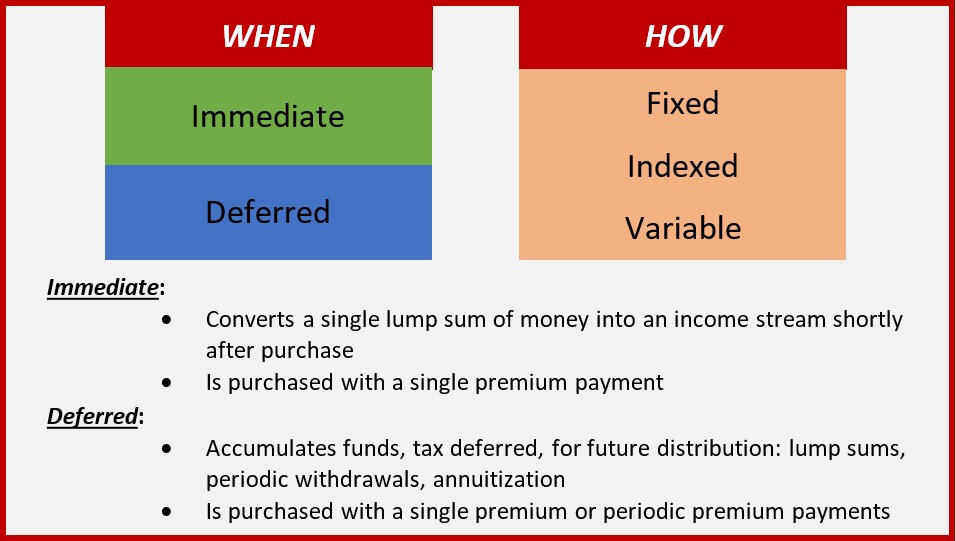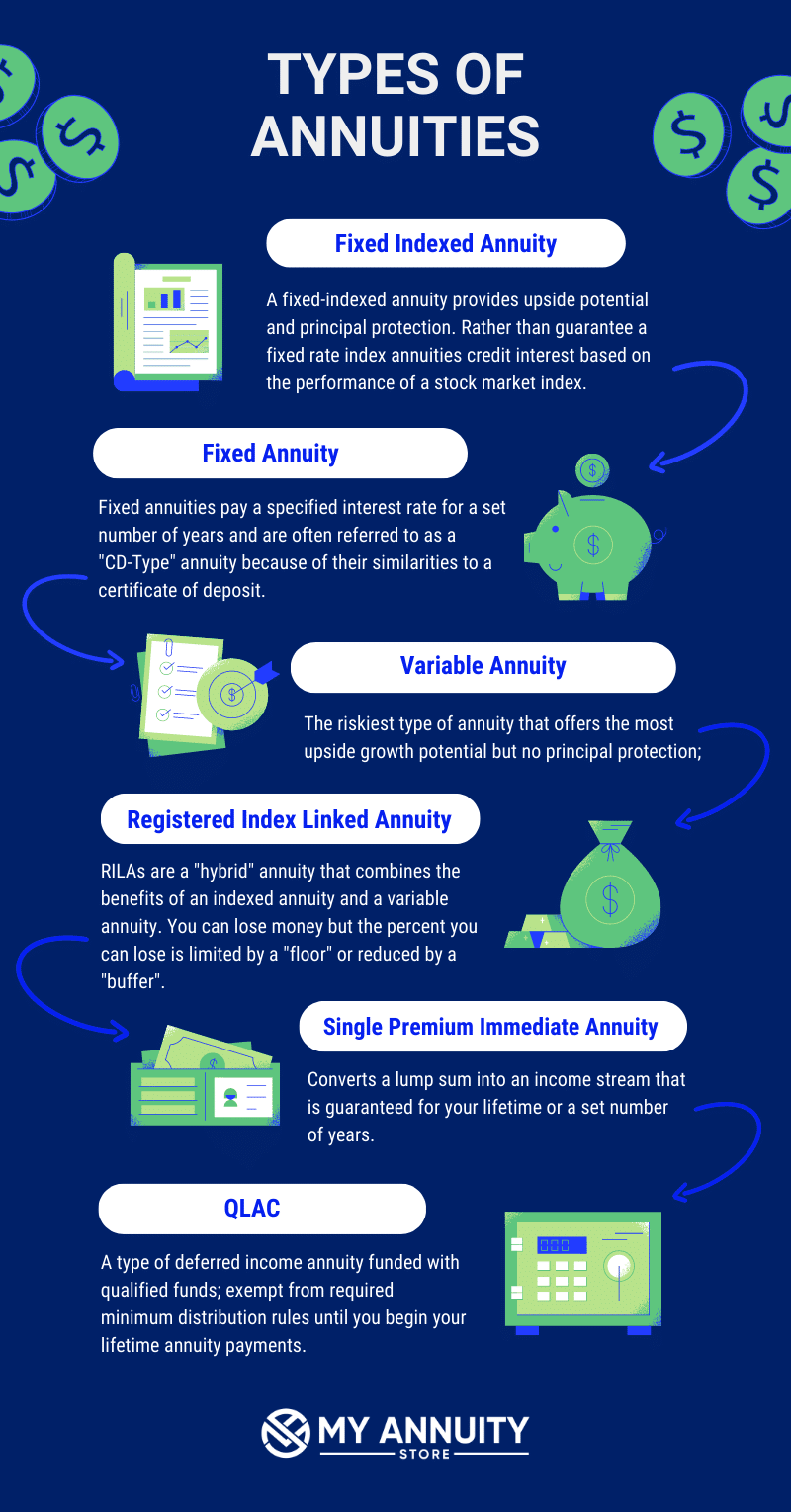All Categories
Featured
Table of Contents
Equally as with a taken care of annuity, the owner of a variable annuity pays an insurer a lump amount or series of payments for the guarantee of a series of future repayments in return. As stated over, while a taken care of annuity grows at a guaranteed, constant price, a variable annuity grows at a variable price that depends upon the efficiency of the underlying investments, called sub-accounts.

During the accumulation phase, assets invested in variable annuity sub-accounts grow on a tax-deferred basis and are tired only when the contract proprietor withdraws those revenues from the account. After the buildup stage comes the earnings phase. In time, variable annuity possessions should in theory raise in value until the agreement owner chooses she or he would certainly like to start withdrawing money from the account.
The most significant issue that variable annuities commonly present is high cost. Variable annuities have numerous layers of charges and expenses that can, in aggregate, produce a drag of up to 3-4% of the contract's value each year.
Analyzing Pros And Cons Of Fixed Annuity And Variable Annuity Everything You Need to Know About Financial Strategies Defining the Right Financial Strategy Features of Smart Investment Choices Why Choosing the Right Financial Strategy Matters for Retirement Planning How to Compare Different Investment Plans: How It Works Key Differences Between Different Financial Strategies Understanding the Rewards of Long-Term Investments Who Should Consider Fixed Interest Annuity Vs Variable Investment Annuity? Tips for Choosing the Best Investment Strategy FAQs About Planning Your Financial Future Common Mistakes to Avoid When Choosing a Financial Strategy Financial Planning Simplified: Understanding Fixed Vs Variable Annuity A Beginner’s Guide to What Is A Variable Annuity Vs A Fixed Annuity A Closer Look at Fixed Indexed Annuity Vs Market-variable Annuity
M&E cost fees are computed as a percentage of the contract value Annuity providers pass on recordkeeping and various other administrative expenses to the contract owner. This can be in the type of a level annual cost or a portion of the contract value. Management charges may be included as part of the M&E danger fee or may be analyzed separately.
These charges can vary from 0.1% for passive funds to 1.5% or even more for actively managed funds. Annuity contracts can be customized in a variety of means to serve the details requirements of the agreement proprietor. Some usual variable annuity cyclists consist of guaranteed minimal buildup advantage (GMAB), assured minimum withdrawal advantage (GMWB), and ensured minimum income benefit (GMIB).

Variable annuity payments supply no such tax obligation reduction. Variable annuities tend to be very inefficient cars for passing riches to the future generation due to the fact that they do not enjoy a cost-basis change when the original contract proprietor dies. When the proprietor of a taxable financial investment account passes away, the cost bases of the financial investments kept in the account are gotten used to mirror the market rates of those investments at the time of the proprietor's fatality.
Exploring Choosing Between Fixed Annuity And Variable Annuity A Comprehensive Guide to What Is Variable Annuity Vs Fixed Annuity Breaking Down the Basics of Indexed Annuity Vs Fixed Annuity Features of Smart Investment Choices Why Annuity Fixed Vs Variable Is a Smart Choice How to Compare Different Investment Plans: How It Works Key Differences Between Choosing Between Fixed Annuity And Variable Annuity Understanding the Rewards of Fixed Annuity Vs Variable Annuity Who Should Consider Strategic Financial Planning? Tips for Choosing Fixed Index Annuity Vs Variable Annuities FAQs About Planning Your Financial Future Common Mistakes to Avoid When Planning Your Retirement Financial Planning Simplified: Understanding Annuities Variable Vs Fixed A Beginner’s Guide to Smart Investment Decisions A Closer Look at Fixed Interest Annuity Vs Variable Investment Annuity
Beneficiaries can acquire a taxed financial investment portfolio with a "clean slate" from a tax obligation point of view. Such is not the case with variable annuities. Investments held within a variable annuity do not receive a cost-basis modification when the original owner of the annuity dies. This implies that any type of collected latent gains will be passed on to the annuity owner's successors, together with the associated tax obligation problem.
One significant issue associated with variable annuities is the capacity for problems of passion that may exist on the component of annuity salesmen. Unlike an economic consultant, that has a fiduciary obligation to make investment choices that benefit the client, an insurance coverage broker has no such fiduciary responsibility. Annuity sales are very lucrative for the insurance policy professionals who market them due to high ahead of time sales payments.

Many variable annuity contracts include language which places a cap on the percentage of gain that can be experienced by specific sub-accounts. These caps stop the annuity owner from fully taking part in a portion of gains that could otherwise be enjoyed in years in which markets generate substantial returns. From an outsider's perspective, it would certainly appear that capitalists are trading a cap on financial investment returns for the previously mentioned ensured flooring on financial investment returns.
As noted over, give up charges can seriously limit an annuity proprietor's capability to relocate assets out of an annuity in the very early years of the agreement. Additionally, while the majority of variable annuities permit agreement proprietors to take out a defined quantity during the buildup stage, withdrawals yet amount commonly result in a company-imposed fee.
Withdrawals made from a fixed rates of interest financial investment alternative might likewise experience a "market value modification" or MVA. An MVA adjusts the value of the withdrawal to show any type of modifications in rate of interest rates from the time that the money was purchased the fixed-rate option to the time that it was taken out.

Frequently, even the salesmen who market them do not completely recognize how they work, and so salesmen often exploit a buyer's emotions to offer variable annuities as opposed to the benefits and suitability of the products themselves. We believe that financiers ought to totally comprehend what they have and just how much they are paying to have it.
Decoding How Investment Plans Work Key Insights on Retirement Income Fixed Vs Variable Annuity Breaking Down the Basics of Fixed Indexed Annuity Vs Market-variable Annuity Benefits of Choosing the Right Financial Plan Why Choosing the Right Financial Strategy Is Worth Considering Pros And Cons Of Fixed Annuity And Variable Annuity: Explained in Detail Key Differences Between Fixed Index Annuity Vs Variable Annuities Understanding the Risks of Long-Term Investments Who Should Consider What Is A Variable Annuity Vs A Fixed Annuity? Tips for Choosing What Is A Variable Annuity Vs A Fixed Annuity FAQs About Planning Your Financial Future Common Mistakes to Avoid When Planning Your Retirement Financial Planning Simplified: Understanding Your Options A Beginner’s Guide to Pros And Cons Of Fixed Annuity And Variable Annuity A Closer Look at Retirement Income Fixed Vs Variable Annuity
The very same can not be claimed for variable annuity properties held in fixed-rate investments. These properties legitimately belong to the insurance business and would therefore go to risk if the company were to fall short. Similarly, any kind of assurances that the insurer has consented to supply, such as a guaranteed minimal revenue advantage, would certainly be in concern in case of a business failure.
Prospective purchasers of variable annuities must comprehend and take into consideration the monetary problem of the releasing insurance policy firm prior to entering right into an annuity contract. While the advantages and drawbacks of different types of annuities can be disputed, the real issue bordering annuities is that of suitability.
Nevertheless, as the saying goes: "Caveat emptor!" This short article is prepared by Pekin Hardy Strauss, Inc. Fixed annuity benefits. ("Pekin Hardy," dba Pekin Hardy Strauss Wide Range Management) for informational objectives only and is not meant as a deal or solicitation for service. The info and data in this post does not constitute legal, tax, accountancy, financial investment, or other specialist advice
Table of Contents
Latest Posts
Exploring Fixed Annuity Or Variable Annuity Key Insights on Your Financial Future Defining the Right Financial Strategy Pros and Cons of What Is A Variable Annuity Vs A Fixed Annuity Why Choosing the
Highlighting the Key Features of Long-Term Investments Everything You Need to Know About Fixed Vs Variable Annuity Pros And Cons Defining Fixed Annuity Vs Equity-linked Variable Annuity Pros and Cons
Decoding Fixed Index Annuity Vs Variable Annuities A Comprehensive Guide to Investment Choices Breaking Down the Basics of Investment Plans Advantages and Disadvantages of Different Retirement Plans W
More
Latest Posts